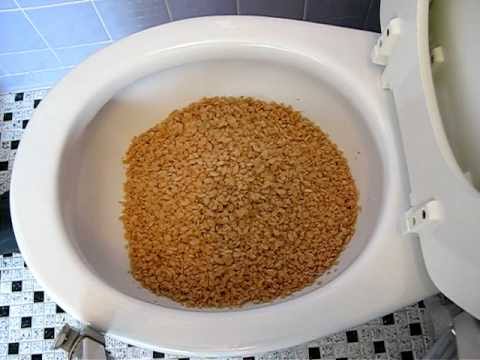We have unearthed this post relating to Is it safe to flush food (especially rice) down the toilet? listed below on the web and believe it made good sense to write about it with you on my blog.

Intro
Many individuals are commonly faced with the issue of what to do with food waste, specifically when it concerns leftovers or scraps. One usual question that develops is whether it's all right to purge food down the commode. In this short article, we'll delve into the reasons why individuals may think about flushing food, the repercussions of doing so, and alternative techniques for appropriate disposal.
Reasons people might think about flushing food
Absence of awareness
Some people might not recognize the prospective injury triggered by flushing food down the toilet. They may mistakenly think that it's a safe technique.
Convenience
Purging food down the commode might appear like a quick and simple remedy to taking care of undesirable scraps, specifically when there's no close-by trash can offered.
Laziness
In many cases, individuals might simply choose to flush food out of sheer laziness, without considering the consequences of their activities.
Consequences of flushing food down the bathroom
Ecological impact
Food waste that ends up in rivers can contribute to air pollution and harm water ecosystems. Furthermore, the water utilized to purge food can stress water resources.
Plumbing problems
Flushing food can result in blocked pipelines and drains pipes, creating expensive plumbing fixings and inconveniences.
Types of food that must not be purged
Coarse foods
Foods with coarse appearances such as celery or corn husks can get entangled in pipelines and trigger clogs.
Starchy foods
Starchy foods like pasta and rice can absorb water and swell, causing clogs in pipelines.
Oils and fats
Greasy foods like bacon or food preparation oils ought to never be purged down the toilet as they can strengthen and create clogs.
Correct disposal approaches for food waste
Making use of a garbage disposal
For homes furnished with waste disposal unit, food scraps can be ground up and flushed with the plumbing system. Nonetheless, not all foods are suitable for disposal in this way.
Recycling
Particular food product packaging products can be recycled, minimizing waste and decreasing ecological influence.
Composting
Composting is an eco-friendly method to get rid of food waste. Organic products can be composted and utilized to enhance soil for gardening.
The significance of proper waste management
Minimizing ecological injury
Appropriate waste management methods, such as composting and recycling, assistance minimize pollution and preserve natural resources for future generations.
Protecting pipes systems
By avoiding the practice of flushing food down the commode, property owners can prevent costly pipes repair services and preserve the stability of their plumbing systems.
Conclusion
In conclusion, while it may be alluring to purge food down the bathroom for comfort, it is very important to understand the prospective repercussions of this action. By taking on correct waste monitoring techniques and throwing away food waste properly, individuals can add to healthier plumbing systems and a cleaner atmosphere for all.
FLUSH FOOD DOWN THE TOILET?
FLUSHING FOOD CAN CAUSE BLOCKED DRAINS IN YOUR HOME
All of the plumbing fixtures in your home are connected to the same sewer pipe outside of your home. This outdoor sewer pipe is responsible for transporting all the wastewater from your home to the Council sewer mains. Even small pieces of food that go down the kitchen sink can cause problems for your sewer. It should therefore be obvious that flushing larger bits of food, such as meat, risks a clog in either the toilet itself or the sewer pipes. Flushing greasy food is even more problematic because oil coagulates when it cools, coating the interior lining of your pipes.
THE TOILET IS NOT A BIN
Food isn’t the only thing that people shouldn’t be flushing down the toilet. People use the toilet to dispose of all kinds of things such as tampons, makeup wipes, dental floss, kitty litter and even underwear. Water goes to great lengths to educate residents about the high costs and stress placed on wastewater treatment systems simply from people flushing the wrong stuff down the toilet. It costs taxpayers millions of dollars each year, and homeowners thousands in blocked drain repairs.
FLUSHING FOOD IS A WASTE OF WATER
Flushing food is a waste of our most precious resource - water. In June this year Level 1 water restrictions were introduced to protect water supply from drought conditions. Much of New South Wales continues to be affected by prolonged drought with recent figures revealing up to 97 per cent of the state remains in drought. Depending on whether you have a single or dual flush toilet, every single flush uses between five and 11 litres of water. In the current climate this is a huge amount of water to be wasting on flushing food that should be placed in the bin (or better yet, the compost).
https://www.jabplumbingsolutions.com.au/blog/can-you-flush-food-down-the-toilet

I have been very focused on and I'm hoping you enjoyed reading the post. Appreciated our piece? Please share it. Help another person check it out. We appreciate your readership.
Visit Homepage
Comments on “Are You Capable to Flush Food in the Toilet?”